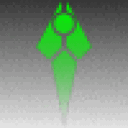J-P, thanks again for this reply. Additional comments inserted into your reply.
Gil
No problem for the questions:
So if you run Crossover itself, you can select your bottle, and you
should see a "control panel" section. Within those icons you should
spot a "wine configuration" icon. Mind you I'm using Crossover in
French, so find similar names, not necessarily the exact names. In
Winecfg (or Wine configuration), go to the "drives" tab which should
look like this:

You should see a "drive" that refers to your "home" which should
look like /home/your_user_name. What I suggest is to make a folder in your
home, and point that same "drive" to that folder. The path will
therefore become something like /home/your_user_name/client_files. That way, any
malware should only be aware of that "client_files" folder which it
thinks is a local drive with the letter D: or F: or whatever other
letter. If something get encrypted, it shouldn't go any further than
that folder. To do the change, select the drive, and just change the
path in the "path" line or browser to the folder. I'm hoping the
tool itself will make things a little clearer.
I created a folder in my home directory ------>>>> /home/my name/Client_Files
I then looked in the Wine Configuration, Drives tab and I see five drives listed. C: I: L: Y: and Z:
For Y: the Target folder is /home/my name
So are you suggesting that I edit the Y: Target folder to show /home/my name/Client_Files? If yes, how do I edit this? Maybe I'm overlooking something very obvious, but I don't see way to edit the Target folder.
And even if I can edit it, I'm not understanding how doing so will help if a Windows-based encryption gets into my computer. Maybe I'm not understanding how Crossover works, but with Y: presently showing /home/my name is everything going to the Y: drive? And if everything is going there now and we add /Client_Files will everything then go to the Client_Files folder? I'm just not understanding how adding /Client_Folders will direct malware there but nothing else.
Sorry for my lack of sophistication in these matters. I'm really not computer illiterate, but I am Windows/Crossover "slow." :o)
I'm not saying this is a guarantied prevention of problems, but that
is where I would start. I'm sure I could ponder this a while longer
and find some convoluted ways to isolate everything, but you would
loose a lot on usability. I have a few ideas right now, but I didn't
test any of them, and they might not work.
I would leave with this:
1) I receive files from client regularly too, and when I was still
using MSOffice, I never came across a single problem. It could still
happen, but the odds aren't high in my book.
2) A little paranoia goes a long way in computer usage because they
actually are out to get you. A careful, aware user is a user with a
higher chance of running a clean computer, no matter the OS. If a
client gives the impression of being computer illiterate, be doubly
careful.



